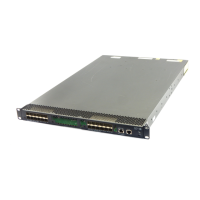236
Binding a source interface to an IPsec policy
For high availability, a core device is usually connected to an ISP through two links, which operate in
backup or load sharing mode. The two interfaces negotiate with their peers to establish IPsec SAs
respectively. When one interface fails and a link failover occurs, the other interface needs to take some
time to re-negotiate SAs, resulting in service interruption.
To solve these problems, bind a source interface to an IPsec policy and apply the policy to both interfaces.
This enables the two physical interfaces to use the same source interface to negotiate IPsec SAs. As long
as the source interface is up, the negotiated IPsec SAs will not be removed and will keep working,
regardless of link failover.
Follow these guidelines when you perform this task:
• Only the IKE-based IPsec policies can be bound to a source interface.
• An IPsec policy can be bound to only one source interface.
• A source interface can be bound to multiple IPsec policies.
• If the source interface bound to an IPsec policy is removed, the IPsec policy becomes a common
IPsec policy.
• If no local address is specified for an IPsec policy that has been bound to a source interface, the
IPsec policy uses the IP address of the bound source interface to perform IKE negotiation. If a local
address is specified, the IPsec policy uses the local address to perform IKE negotiation.
To bind a source interface to an IPsec policy:
Ste
Command
Remarks
1. Enter system view.
system-view N/A
2. Bind a source interface to an
IPsec policy.
ipsec { ipv6-policy | policy }
policy-name local-address
interface-type interface-number
By default, no source interface is
bound to an IPsec policy.
Enabling QoS pre-classify
If you apply both an IPsec policy and a QoS policy to an interface, QoS classifies packets by using the
new headers added by IPsec. If you want QoS to classify packets by using the headers of the original IP
packets, enable the QoS pre-classify feature.
For more information about QoS policy and classification, see ACL and QoS Configuration Guide.
To enable the QoS pre-classify feature:
Ste
Command
Remarks
1. Enter system view.
system-view N/A

